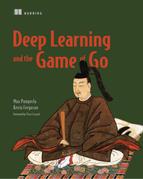Book Description
Deep Learning and the Game of Go introduces deep learning by teaching you to build a Go-winning bot. As you progress, you’ll apply increasingly complex training techniques and strategies using the Python deep learning library Keras. You’ll enjoy watching your bot master the game of Go, and along the way, you’ll discover how to apply your new deep learning skills to a wide range of other scenarios!
